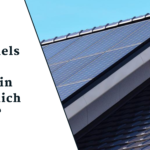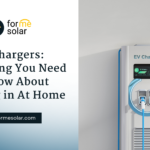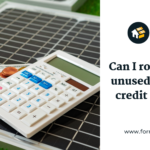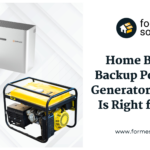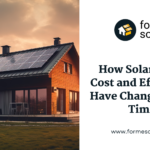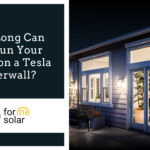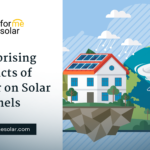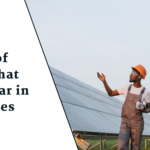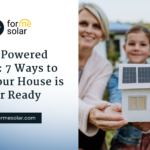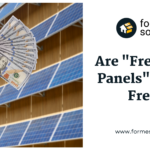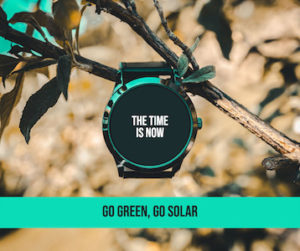
How Much do Microinverters Cost?
In solar panel systems that experience partial shadowing, microinverters are utilized. Central inverters operate as a string or circuit, and if just one panel is shaded, they can be disconnected. Micro inverters allow each panel in the system to operate independently. A microinverter costs $1.15 per watt, compared to $0.75 per watt for central inverters; you may alternatively use a power optimizer instead of a micro-inverter, which costs around $1.00 per Watt and achieves the same thing.
Cost per Watt: String VS. Microinverter
| String inverter | Micro inverter | Power optimizer | |
| Cost per Watt | $0.75 | $1.15 | $1.00 |
| Cost per KiloWatt | $750 | $1,150 | $1,000 |
| 4kW system | $3,000 | $4,600 | $4,000 |
| 5kW system | $3,750 | $5,750 | $5,000 |
| 6kW system | $4,500 | $6,900 | $6,000 |
| 10kw system | $7,500 | $11,500 | $10,000 |
Benefits of Microinverter Systems
Microinverters offer several advantages over other types of solar power inverter systems. Here are some of the most important features:
25-years warranty
When choosing an inverter, one of the most important considerations is its expected lifespan. The inverter is the most expensive and most prone to fail component of your solar system. It's comforting to know that microinverters have the same 25-year warranty as solar panels. Other inverter systems, such as string and hybrid inverters, offer 8 to 12-year guarantees.
Easy to Install
In addition to integrating microinverters into their solar panels, LG solar panel manufacturers have developed systems that make it easy for installers to wire the panels together. This reduces costs since labor hours are a sizable part of your investment.
Performance monitoring
With microinverters placed behind each panel in your PV system, you may track individual panel performance using a smartphone app. Smart applications like the Enphase Enlighten system may alert you when power performance falls short of expectations.
For example, if the weather is clear and sunny but your panels are not producing as much electricity as they should, you will be notified that your panels are not producing within their typical range. This allows you to check for any trash, bird excrement, or equipment damage that may be affecting the functioning of your system.
Optimal performance
Even if part of your solar array's panels are shaded in the morning or evening, microinverters guarantee that your fuse box receives the maximum amount of AC power from each panel. This is due to the fact that microinverters enable each panel to generate as much energy as possible without relying on the performance of an adjacent panel.
This feature is also valuable for complicated roofs with numerous angles. Even if a few panels face the sun at a slightly less efficient angle, the remainder of your system will continue to produce watts at peak levels.
System expansion is quick and easy.
You may expand your solar system in the future by using microinverters. This might be useful if you have a restricted budget today but know that you'd like to gather more energy in the future. Perhaps you are aware that you will require more energy in the future because you are caring for a brood of children or want to establish a home-based workshop.
Because the DC to AC conversion occurs at each panel, your system does not require a central inverter. More panels may be easily added to your system by your solar contractor.
Drawbacks of Microinverter Systems
The following are some issues to consider when selecting a microinverter because no particular type of inverter will check all of the criteria.
It's more expensive
Microinverters are expensive. They must be attached to the rear of each and every solar panel. They are usually more expensive than a string inverter on a basic 5kW household solar installation.
Unless you choose a panel-integrated microinverter like the LG type, installer work hours will make up the majority of the cost difference between string inverters and microinverters. This fee might vary greatly depending on the installer you use and how difficult your roof is to work on.
An Upgrade is Required
Although microinverter manufacturers claim to offer a monitoring system, they do not always include it in their package unless you purchase an upgrade.
They could take this action in order to save themselves and their installers from support calls relating to faulty microinverters. Without panel-level analysis, rather than the system-wide monitoring that is typically provided instead, it is very difficult to tell whether only one or two microinverters out of around 25 have failed.
Least suited for battery backup systems
Microinverters are not the best option for adding battery storage to your solar system. For optimal power production, connect your panels to your battery before converting the current to AC and then back to DC.
Because batteries run in direct current and solar panels produce direct current, we suggest utilizing DC power optimizers or hybrid inverters instead. They work best when combined with DC batteries.
Adding more technology to your roof
Microinverters are designed to be placed below each solar panel on your roof, which adds up to a lot of electrical equipment. We'd be concerned about each microinverter being a lightning rod if you had an older property with more exposed wood timbers.
Enphase, the primary maker of microinverters, answered a customer's query about whether lightning may damage microinverters. While they claim their surge protection is superior to string inverters, they warn that if local requirements demand it, you may need to install extra lightning protection. However, the company makes no mention of the increased likelihood that your roof would be struck by lightning.
What Types of Solar Systems Are Compatible With Microinverters?
Microinverters may be used with almost any arrangement, however, there are a few situations where they are very useful. If you wish to compare solar micro inverters to centralized string inverters, consider the following:
- You have a complicated solar installation with panels pointing in different directions or at different angles.
- There is some shadowing in the location where your panels will be installed.
- You want to be as efficient as possible.
- You want to be able to individually check each panel's health and productivity.
Are power optimizers the same?
Yes. The only distinction is that they continue to transfer electricity to a central inverter to convert it from DC to AC. Nonetheless, they, like microinverters, separate your system into independent portions, protecting it from partial shading. These convert your DC solar panels into direct-use AC solar panels.
Are they worth it?
They are needed if you have partial shade from trees or other barriers between the major power harvesting hours of 10 a.m. and 3 p.m. It is not required to install them if you do not have any shading problems.
Next steps
The advantages of microinverters cannot be overstated. They outperform string inverters in terms of efficiency, safety, energy harvesting, and system monitoring, as well as dependability and ease. If you're looking to get solar panels on your roof, Forme Solar can help. There has never been a better time to switch to solar! If you're ready to get started, simply fill out this short form with a few brief facts, and we'll link you with local specialists who will offer you free, customized quotations.

